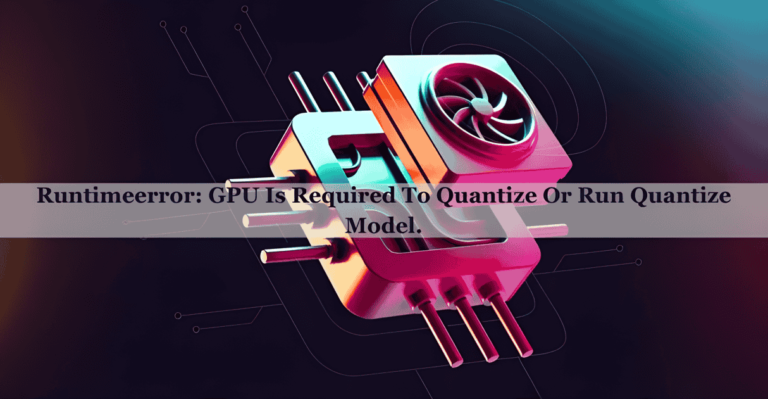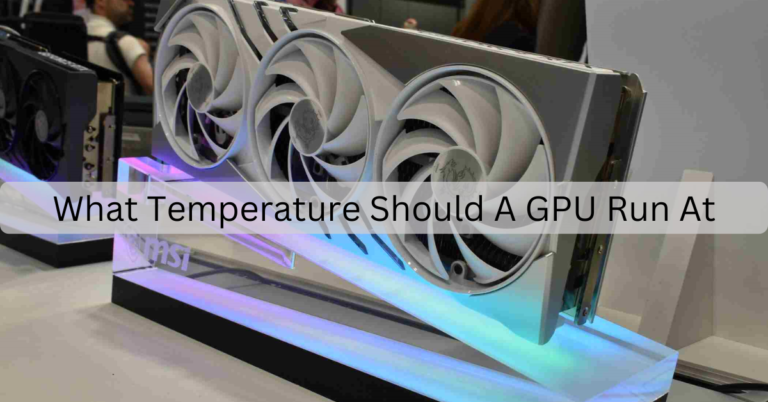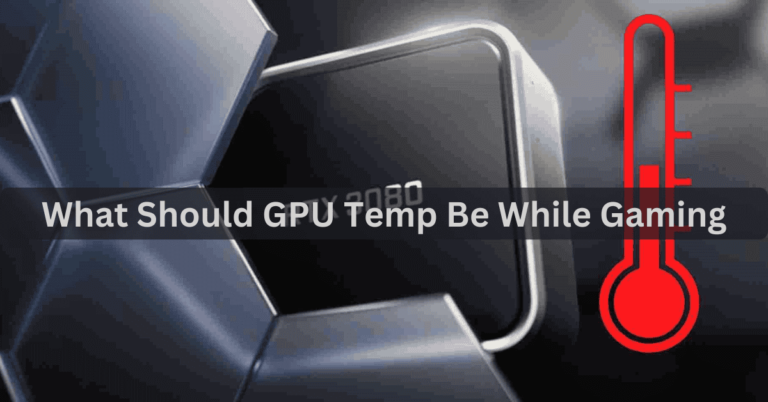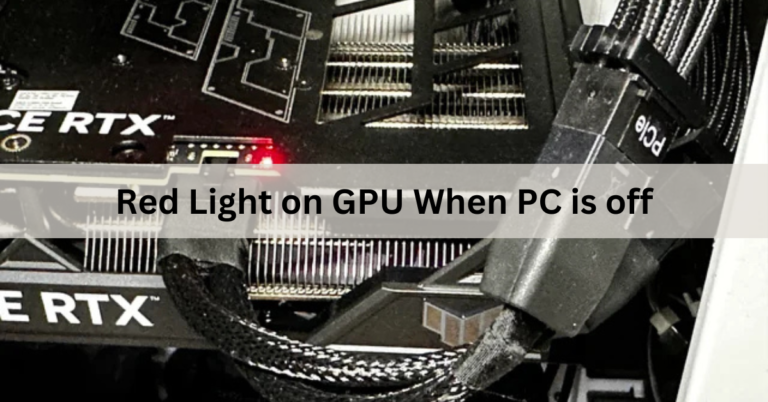Does AMD GPU Work With Intel CPU – Here’s the Truth!
I’ve paired an AMD GPU with an Intel CPU, and they work perfectly together with no issues. This combo is smooth and reliable for gaming or productivity.
Yes, an AMD GPU works well with an Intel CPU. They’re fully compatible and perform smoothly together, making this combination a great choice for gaming, productivity, and everyday use without any issues.
In this article, we will discuss whether an AMD GPU works with an Intel CPU. We’ll cover how they can be paired and what you need to know for your setup.
Can You Mix AMD Graphics Cards with Intel Processors?
Yes, you can use AMD graphics cards with Intel processors. AMD GPUs are fully compatible with Intel CPUs, as they follow universal standards for PC components. This means they work smoothly together without any special configurations needed, making them an easy choice for both gaming and productivity setups. Whether you’re using an AMD or Intel CPU, you won’t face any issues pairing it with an AMD GPU.
Combining an AMD GPU with an Intel processor can offer excellent performance, especially for those who want flexibility in their builds. Many users choose this setup to get the best of both brands—Intel CPUs are known for strong single-core performance, while AMD GPUs are recognized for their power in handling high-resolution graphics and gaming visuals. This compatibility allows you to create a balanced system tailored to your needs, with no sacrifice in performance.

Is AMD GPU Compatible with Intel CPU?
Yes, AMD GPUs are compatible with Intel CPUs, allowing users to build versatile systems without any concerns about compatibility issues. Both AMD and Intel follow standard interfaces, such as PCI Express, which means that you can easily install an AMD graphics card on a motherboard featuring an Intel processor. This compatibility makes it convenient for gamers and content creators looking to customize their rigs.
In practical terms, pairing an AMD GPU with an Intel CPU can deliver strong performance across various tasks, from gaming to graphic design. Many users find that this combination provides excellent graphics quality and smooth frame rates, especially in demanding applications. With the right setup, you can enjoy the benefits of both AMD’s visual capabilities and Intel’s processing power, creating a balanced and efficient computing experience.

Using an AMD GPU on an Intel System!
Troubleshooting Common Issues:
If you encounter problems while using an AMD GPU on an Intel system, there are some common troubleshooting steps to consider. First, check that all cables are securely connected and that the GPU is properly seated in its slot. If performance is lacking, ensure that your drivers are updated and check for any background applications that may be using resources. These easy steps can fix a lot of common problems.

Driver Installation and Updates:
To get the best performance from your AMD GPU on an Intel system, it’s essential to install the latest drivers. These drivers help the GPU communicate effectively with the CPU and improve overall performance. Regularly check for updates from AMD to ensure you are taking advantage of any enhancements or bug fixes. Keeping your drivers updated can lead to a better gaming experience and improved stability.

Performance Benefits:
Combining an AMD GPU with an Intel CPU can lead to great performance, especially in gaming and graphics-intensive tasks. AMD graphics cards are known for their ability to handle high resolutions and detailed graphics. When paired with a powerful Intel CPU, you can expect smooth gameplay and efficient performance in demanding applications like video editing and 3D rendering.

How to Optimize Performance with AMD GPUs and Intel CPUs Together?
To optimize performance with AMD GPUs and Intel CPUs together, start by ensuring that your system is properly configured. Make sure to install the latest drivers for both the AMD GPU and the Intel CPU to maximize compatibility and performance. Keeping your operating system updated is also essential, as it can improve stability and enhance overall functionality. Additionally, consider adjusting in-game settings to find a balance between graphics quality and frame rates, ensuring a smooth gaming experience.
Another effective way to boost performance is to monitor system temperatures and manage cooling effectively. Both the CPU and GPU generate heat during intensive tasks, so using quality cooling solutions can prevent thermal throttling and maintain optimal performance. Overclocking can also be a viable option for advanced users; however, it should be done carefully to avoid instability. By paying attention to system performance and making adjustments where necessary, you can enjoy the full potential of your AMD GPU and Intel CPU combination.

Pairing AMD Graphics Cards with Intel CPUs!
Performance Optimization Tips:
- Update Drivers: Install the latest drivers for both AMD and Intel components to enhance performance and stability.
- Keep the OS Updated: Ensure your operating system is up-to-date for improved functionality and compatibility.
- Adjust In-Game Settings: Balance graphics quality and frame rates by tweaking settings to achieve smoother gameplay.

Cooling and Monitoring:
- Effective Cooling Solutions: Use quality cooling systems to prevent overheating of the CPU and GPU during intensive tasks.
- Monitor System Temperatures: Keep an eye on temperatures to avoid thermal throttling and maintain optimal performance.

Advanced Performance Options:
- Consider Overclocking: For advanced users, overclocking can enhance performance but should be approached with caution to prevent instability.
- Regular Performance Checks: Continuously assess system performance and make adjustments as needed for an optimal computing experience.

FAQs:
Can I pair an AMD graphics card with an Intel processor?
Yes, you can pair an AMD graphics card with an Intel processor without any issues. They are compatible and will work well together in your system.
Do I need special software for AMD GPU and Intel CPU to work together?
No special software is needed. Just install the correct drivers for both components to ensure they work well together.
What benefits do I get from using an AMD GPU with an Intel CPU?
This combination can deliver great performance in gaming and other graphics tasks, allowing for smooth visuals and faster processing.
Are there any specific Intel CPUs that work better with AMD GPUs?
Most modern Intel CPUs work well with AMD GPUs. Focus on getting a CPU with good performance ratings for the best results.
Will my computer run slower if I mix AMD and Intel parts?
No, mixing an AMD GPU with an Intel CPU shouldn’t slow down your computer. They can work together efficiently without performance issues.
What if I have trouble installing my AMD GPU on an Intel system?
If you have installation issues, check if the GPU is properly seated in the slot and ensure all power connections are secure.
Can I upgrade my AMD GPU while using an Intel CPU?
Yes, you can upgrade your AMD GPU anytime. Just make sure the new GPU is compatible with your current system setup.
Will I need a new power supply when upgrading to an AMD GPU?
It depends on the power requirements of the new GPU. Make sure your power supply can handle the increased demand for power.
How can I ensure my AMD GPU and Intel CPU work well together?
Keep your drivers updated and monitor system temperatures to avoid overheating. This will help maintain good performance.
Is there any risk in using an AMD GPU with an Intel CPU?
There is no significant risk involved. This combination is common and widely used, offering a reliable performance for various applications.
Final Words:
In conclusion, using an AMD GPU with an Intel CPU is a smart choice for anyone looking to build a reliable and powerful system. This combination ensures compatibility and high performance, making it suitable for gaming, graphic design, and everyday tasks. By keeping drivers updated and managing system temperatures, you can enjoy a smooth computing experience without issues.







